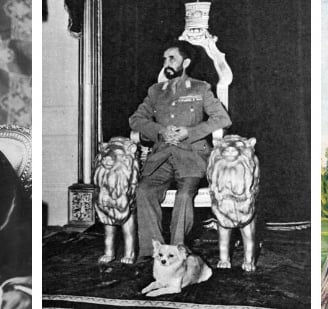The Life and Legacy of Haile Selassie I: King, Reformer, and Rastafari Icon
Explore the extraordinary life of Haile Selassie I, Ethiopia’s last emperor and a global symbol of resistance, modernization, and African unity. From his rise to power to his spiritual significance in the Rastafari movement, this blog uncovers the complexities of his reign, his impact on world history, and his enduring legacy as a cultural and spiritual icon.
Adowan Selassie
2/21/20252 min read


The Life and Legacy of Haile Selassie I
Haile Selassie I, born Tafari Makonnen on July 23, 1892, was a pivotal figure in Ethiopian and African history. His reign as Emperor of Ethiopia from 1930 to 1974 left an indelible mark on the world, influencing politics, religion, and culture far beyond his nation's borders.
Rise to Power
Selassie's journey to the throne was marked by political maneuvering and family intrigue. As a young man, he gained influence at the imperial court, eventually becoming Regent alongside Empress Zewditu in 1917. His coronation as Emperor in 1930 was a grand affair, attended by dignitaries from around the world and widely reported in international media.
Modernization and Resistance
As Emperor, Selassie sought to modernize Ethiopia through social, economic, and educational reforms. He strengthened schools and police forces, centralized his power, and introduced a new constitution. However, his reign faced significant challenges, including the Italian invasion of 1936, which forced him into exile. Selassie's impassioned plea for assistance before the League of Nations during this time became a defining moment of his rule.
International Statesman
Selassie's return to power in 1941, with British support, marked the beginning of his role as an international statesman. He led Ethiopia into the United Nations and played a crucial role in forming the Organisation of African Unity (now the African Union) in 1963. His efforts to balance traditional governance with modernization and his navigation of Cold War politics showcased his diplomatic skills.
Spiritual Icon
Perhaps Selassie's most unexpected legacy lies in his deification by the Rastafari movement. Following Marcus Garvey's prophecy of a black king in Africa, many Rastas came to view Selassie as the living God or 'Jah.' This belief began in Jamaica in the 1930s and spread globally, influencing music, culture, and spirituality.
Controversies and Downfall
Despite his achievements, Selassie's reign was not without controversy. His government faced accusations of authoritarianism, and growing social issues like famine and unemployment ultimately led to his overthrow in 1974. The circumstances of his death in 1975 remained shrouded in mystery for years.
Enduring Impact
Haile Selassie's legacy is complex and multifaceted. To some, he remains a symbol of African independence and dignity; to others, he represents the challenges of modernizing a traditional society. His influence on the Rastafari movement ensures his continued relevance in global culture.
Selassie's life story is a testament to the complexities of leadership in the 20th century. From his efforts to resist colonialism to his role in shaping pan-African unity, Haile Selassie I left an indelible mark on history—one that continues to fascinate and inspire people around the world.
Unity
Empowering Rastafari through community and collaboration.
Culture
Growth
info@rastafariworld.org
Ghana:
Antigua & Barbuda:
USVI:
Jamaica:
Trinidad & Tobago:
United States:
United Kingdom:
Ras Tafari World © 2025. All rights reserved.
